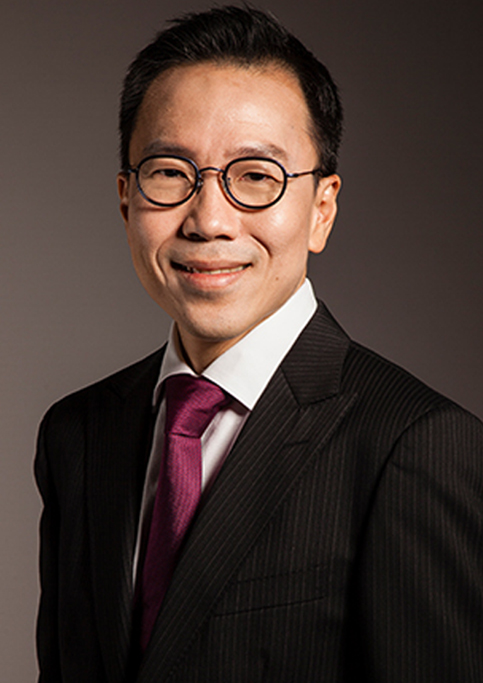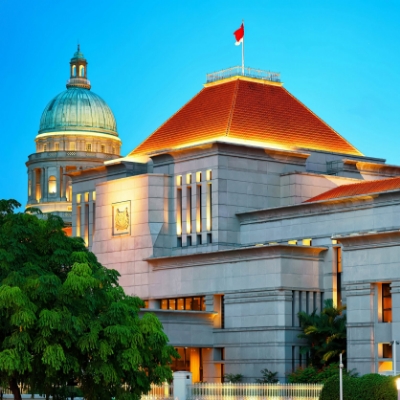For decades, the Republic has moved steadily towards becoming an innovation-driven economy. Today, it is poised for the next phase in its innovation journey, with its position as a business hub in rising Asia, and access to private venture capital.
Innovation may be the buzzword today but for Singapore's economic planning agencies, our journey in fact began two decades ago.
The Singapore Economic Development Board (EDB) was established in 1961 to spearhead the industrialisation of Singapore. The aim was to diversify the economy from our roots as a British trading port. This task took on greater urgency with the withdrawal of British troops in the early 1970s and the ensuing loss of jobs.
Given our small market, we could not rely on import substitution to promote manufacturing. Instead, we chose the less conventional route at that time, of attracting investments from multinational corporations (MNCs). As a result of that decision, we were able to ride the rising tide of globalisation.
Over the past five decades, Singapore has steadily moved up the value chain and developed the capabilities to partner companies in skills-intensive and technology-intensive industries.
Today, we are the fourth-largest exporter of high-tech products as defined by the World Bank, behind only China, Germany and the United States.
At the same time, our port has become one of the world's busiest and we have seen a concomitant growth in the service businesses associated with shipping and trade.
Since the 1980s, Singapore has harnessed these successes to expand our internationally tradable service sector by developing tourism and aviation, regional headquarter and professional services, finance and others.
Competing as a first world economy
However, in the late 1990s, China's ascendance as a manufacturing powerhouse and the US-led Internet boom prompted policymakers to think deeply about whether the economic strategies that had brought Singapore from Third World to First World would be sufficient to help us thrive as a First World economy.
The Government responded with two far-sighted initiatives in the early 2000s. The first was to expand the research capabilities of our universities and the research institutes of the Agency for Science, Technology and Research (A*Star).
The second was to encourage "technopreneurship" and foster a vibrant startup ecosystem. The overall objective was to strengthen the innovation capacity of our economy and businesses' ability to undertake product, process and application development.
Those two moves are bearing fruit today. According to A*Star, the number of research scientists and engineers has more than doubled between 2000 and 2015 to reach 34,988. Business spending on research and development grew from $1.866 billion to $5.825 billion over the same period.
The National University of Singapore and Nanyang Technological University are now routinely ranked among the top five universities in Asia.
Major companies such as Dyson, Procter & Gamble, Applied Materials and Infineon have also established R&D centres in Singapore.
And in global studies measuring innovation, Singapore has been consistently placed among the world's top 10 most innovative economies, alongside countries such as South Korea, Sweden and Finland.
For example, both the 2017 Bloomberg Innovation Index and the 2016 Global Innovation Index published by Cornell University, Insead and the World Intellectual Property Organisation ranked Singapore as the world's sixth most innovative economy.
In recent years, the startup ecosystem in Singapore has also started to blossom despite a slow start due to the dot.com bust, Sars and the global financial crisis.
The Economist dubbed Singapore's Block71, a former flatted factory block that is now home to more than 200 startups, as the world's most tightly packed entrepreneurial ecosystem.
In addition, we have nurtured our share of "unicorns" - startups valued at over US$1 billion (S$1.36 billion) - such as Garena (renamed as Sea), Razer, Lazada and Grab, and are attracting fast-growing ventures from around the world to locate in Singapore.
Making the shift
It is on the back of the earlier initiatives that Singapore is now able and ready to make the shift to an innovation-led economy.
As outlined in the Committee on the Future Economy report, innovation - both to make more productive use of resources, and to create new businesses and new products - is an important priority for Singapore. And the Government is partnering all segments of the corporate landscape, including large local enterprises and MNCs, in this push for innovation.
Let me offer three reasons why I believe that Singapore will succeed in this transition.
Rise of Asia
The first is the rise of Asia. The acceleration of the region's growth over the past decade has resulted in Asia becoming the growth engine in many market segments.
The Brookings Institution has predicted that Asia could account for 40% of global middle-class consumption by 2030, generating enormous demand for new products and new services.
Urbanisation is another mega trend that represents an unprecedented opportunity for innovators to create new businesses from Singapore. Analysts have estimated that US$11.5 trillion of infrastructure investment will take place in Asia between 2013 and 2030.
Business talent concentration
Second, the concentration of Fortune 500 companies in Singapore is unique. Whether it is technology companies like Apple, Google and Facebook; consumer giants like Coca-Cola, Kraft and Unilever; semiconductor companies like Broadcom, Micron and Qualcomm; or oil majors like ExxonMobil, Shell and Total, Singapore has become the preferred location for US and European companies to site their regional headquarters in Asia.
In the same vein, companies from Japan, South Korea and, more recently, China and India find Singapore to be the ideal location for their South-east Asian headquarters. This creates an attractive market for B2B businesses to test-bed new products and secure launch customers.
More interestingly, the presence of companies from diverse industries within our compact city could foster collaborations to start new businesses that cut across disciplines and industry boundaries.
Private capital
Third is the availability of venture capital and private equity.
According to the Singapore Venture Capital and Private Equity Association, annual levels of VC funding into Singapore-based companies have been consistently topping US$1 billion in recent years, while Singapore-based VCs have doubled their assets under management in the past five years to US$3.6 billion last year.
With economic affluence in Asia, high-net-worth families and sovereign wealth funds from this region will have an ever-expanding capacity to allocate more capital to the creation of new businesses.
These three factors, complemented by our strong scientific base, the growing vibrancy of the startup ecosystem, as well as Singapore's traditional strengths as a trusted business location, and its attractiveness to talents and connectedness to the world, give cause for my optimism.
Then there is the ambition of young Singaporeans to play on the world stage and desire to make a difference that I believe will make the difference in driving Singapore's transformation into a value-creating, innovation-led economy. Trailblazers such as Tan Min-Liang of Razer, Peter Ho of Hope Technik, Quek Siu Rui of Carousell, Forrest Li of Garena, Anthony Tan of Grab and their peers are showing that we can climb the summit and inspire others to follow in their footsteps.
As a small country, attracting foreign investments and industry leaders will remain important for Singapore. EDB will continue to build on our strengths in industries such as semiconductors, energy and chemicals, biomedical sciences, aerospace, industrial machinery and infocomm technology. We will also expand into adjacent areas of opportunity including cleantech, speciality chemicals, cell therapy, robotics, digitalisation and e-commerce.
However, the time is ripe for us to accelerate our efforts to create new regional and global businesses from Singapore. EDB is working closely with other government agencies such as Spring Singapore and the National Research Foundation to sustain the growth momentum of our startup ecosystem.
In addition, EDB has been piloting a new initiative called Create that aims to catalyse the formation of new businesses by our large local enterprises and MNCs with the mandate and capabilities to do so from Singapore.
We are confident that these efforts will position Singapore well in the new global economy and create good jobs for Singaporeans that meet their aspirations.
In many ways, we are returning to what Singapore does best.
The Singapore story is about how we overcame constraints to innovate and transform a colonial backwater into a thriving metropolis. We are about turning possibilities into reality for a better Singapore and a better world.
Dr Beh Swan Gin is chairman of the Singapore Economic Development Board. A medical doctor by training, he also became a civil servant; he was formerly the permanent secretary of the Ministry of Law.
This article first appeared in the Opinion section of The Straits Times, on 23 August 2017.







